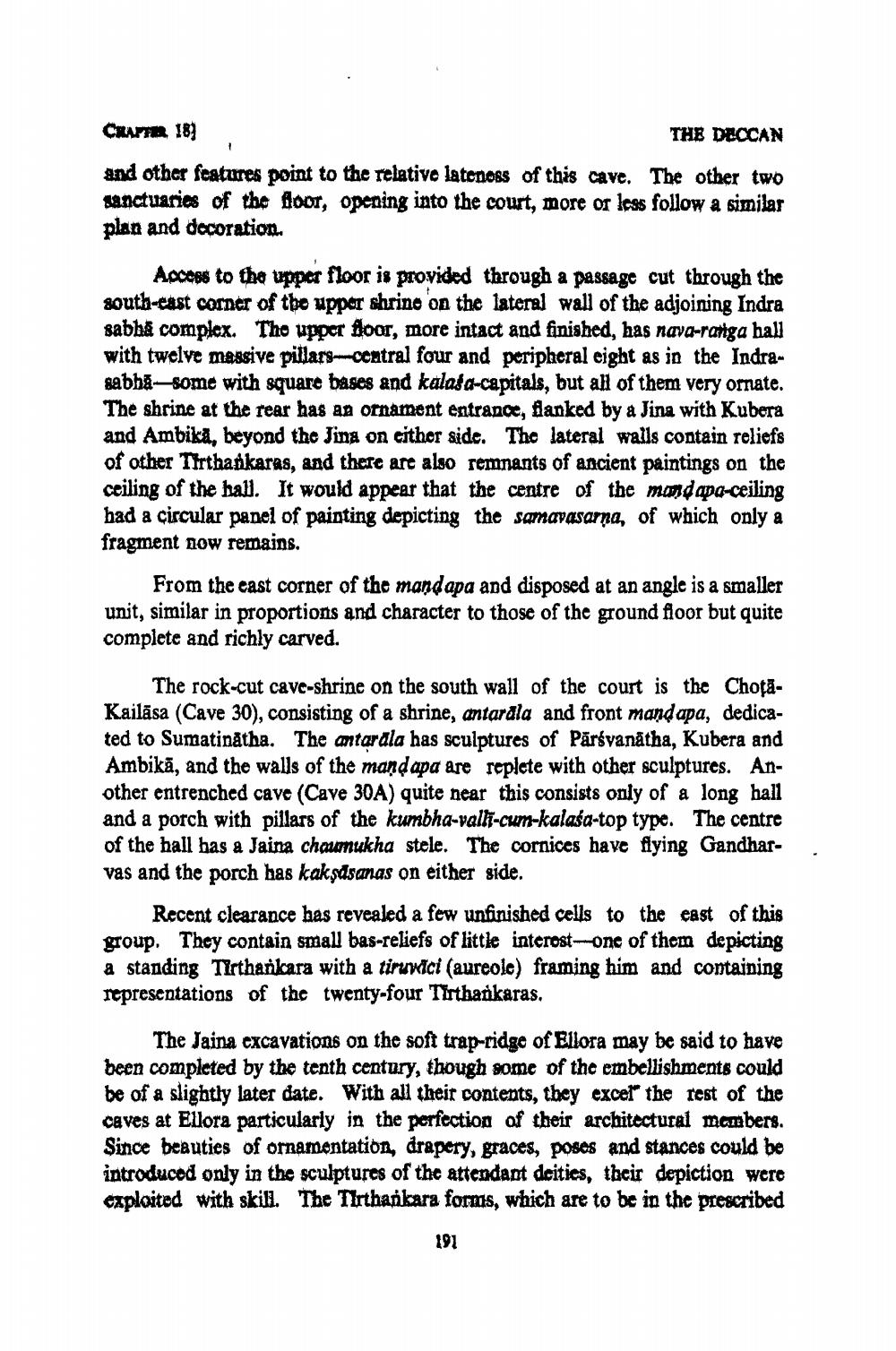________________
CHAPTER 18)
THE DECCAN
and other features point to the relative latenoss of this cave. The other two sanctuaries of the floor, opening into the court, more or less follow a similar plan and decoration
Access to the upper floor is provided through a passage cut through the south-east corner of the upper shrine on the lateral wall of the adjoining Indra sabha complex. The upper floor, more intact and finished, has nava-ranga ball with twelve massive pillars omtral four and peripheral eight as in the Indrasabhā—some with square bases and kalasa-capitals, but all of them very ornate. The shrine at the rear has an ornament entrance, danked by a Jina with Kubera and Ambika, beyond the Jina on either side. The lateral walls contain relie of other Tirthankaras, and there are also remnants of ancient paintings on the ceiling of the hall. It would appear that the centre of the mind apa-ceiling had a circular panel of painting depicting the samavasarna, of which only a fragment now remains.
From the east corner of the mandapa and disposed at an angle is a smaller unit, similar in proportions and character to those of the ground floor but quite complete and richly carved.
The rock-cut cave-shrine on the south wall of the court is the ChotăKailāsa (Cave 30), consisting of a shrine, antardla and front mand apa, dedicated to Sumatinatha. The antarala has sculptures of Pārsvanátha, Kubera and Ambikā, and the walls of the mand apa are replete with other sculptures. Another entrenched cave (Cave 30A) quite near this consists only of a long hall and a porch with pillars of the kumbha-valh-cum-kalasa-top type. The centre of the hall has a Jaina chaumukha stele. The cornices have flying Gandharvas and the porch has kakşdsanas on either side.
Recent clearance has revealed a few unfinished cells to the east of this group. They contain small bas-reliefs of little interest-one of them depicting a standing Tirtharikara with a tiruvici (aureole) framing him and containing representations of the twenty-four Tirthankaras.
The Jaina excavations on the soft trap-ridge of Ellora may be said to have been completed by the tenth century, though some of the embellishments could be of a slightly later date. With all their contents, they excel the rest of the caves at Ellora particularly in the perfection of their architectural mambers. Since beauties of ornamentation, drapery, graces, poses and stances could be introduced only in the sculptures of the attendant deities, their depiction were exploited with skill. The Tirthankara forms, which are to be in the prescribed
191




